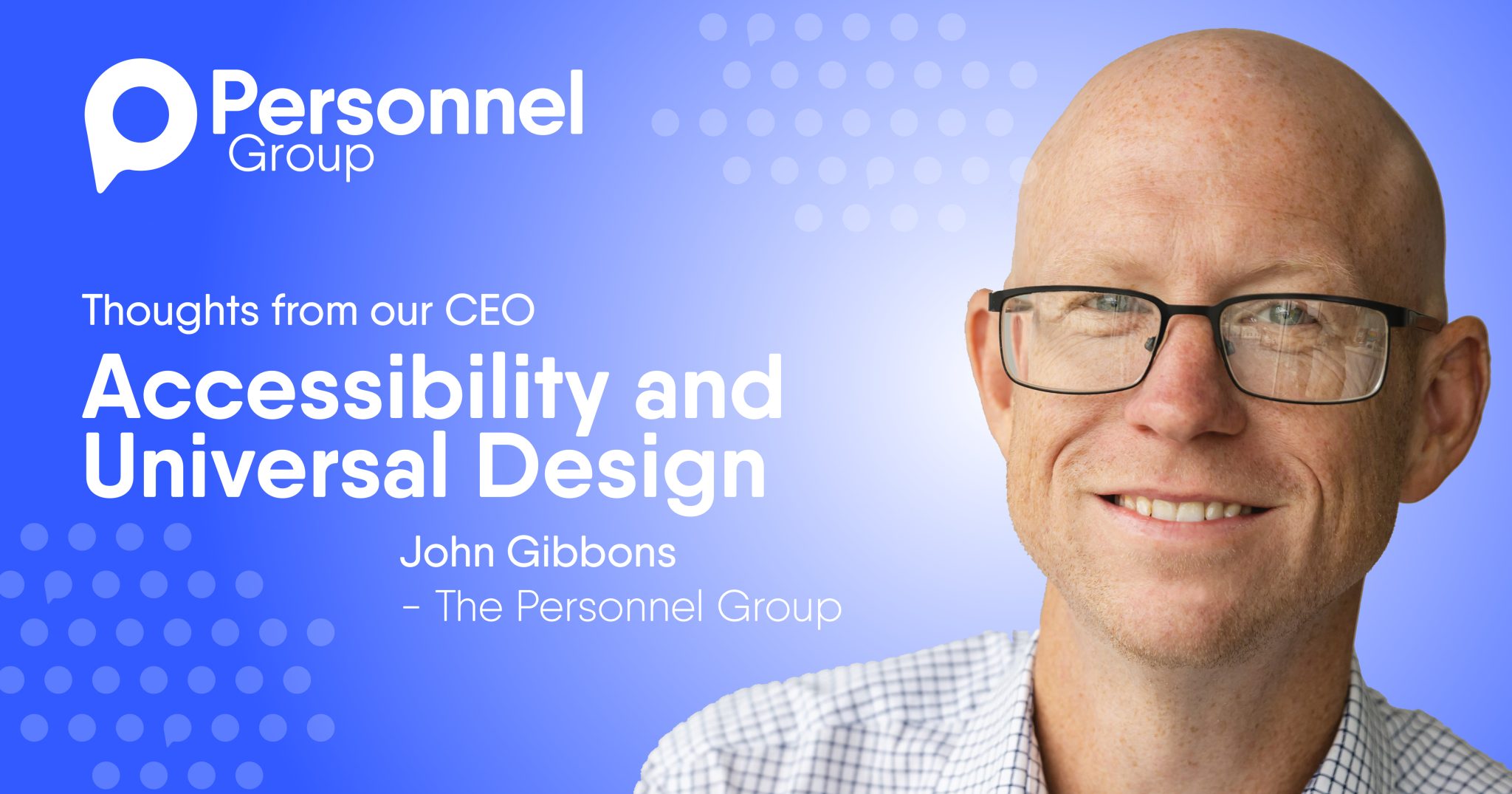Accessibility and Universal Design

Accessibility and Universal Design
Nov 14 2022
5min read
I’ve been thinking a lot recently about how The Personnel Group can be an even more inclusive employer and workplace.
As an organisation that works in this space, we already have many things in place that support a diverse workforce.
Still, I aspire to set even higher standards for the equity we provide our team.
This has led to a lot of reading and discussion about accessibility principles and universal design.
It is challenging my thinking on what accessibility looks like beyond plans, policies, and good intentions.
Over many years working in this industry, I had come to view accessibility as a principle where people with a disability were provided with tools or adjustments that allowed them to access the same services as people without disabilities.
In fact – I’ve personally been involved in organising quite a few workplace modifications or role redesigns to support a person with disability’s integration into a workplace.
Now though, I am awakening to the much broader scope that universal design provides when considering accessibility.
Universal Design is the principle that spaces, systems and services are designed to be accessible to all people.
It goes beyond a strategy around disability and instead speaks to overall equality.
It appreciates that all people have barriers, and that careful consideration in design can improve the experience of much broader sections of the community, beyond just the targeted few.
An example might be building ramps or lifts rather than stairs. This, of course, helps a person in a wheelchair but equally makes things easier and more accessible for an older person or a child.
Similarly, developing easy-read forms can improve the experience of someone with a learning disability and make things more straightforward for someone with low literacy or someone newly learning a language.
A person with autism might appreciate calm lighting and colours in the space they are accessing, but so too would any person who is tired or stressed.
The principle does take into consideration that some cohorts might have conflicting needs, but that importantly those needs are understood, considered, and adjustments made wherever possible.
An example of this is supermarkets introducing low sensory hours with dimmed lighting and music.
It would be impractical to have this arrangement through the entire day, as some customers rely on the usual level of lighting, but this shows that a reasonable adjustment is achievable.
Given my challenged perspective on how accessibility can look, I am now seeing so many examples of where people are excluded from full equality by the systems and structures that society has in place.
Some of this is because of the cost of change, which can be significant, particularly relating to building design. However, government programs such as the Workplace Modifications system can assist with this.
More so, I believe change has been slow because organisations cannot see the unintentional exclusion they can create, or the opportunities that arise from being genuinely accessible.
share
You might also like…

Explore more topics
Career transition assistanceCEO BlogCommunity championsCommunity PartnershipsCorporate identityNew CategoryNewsSuccess storiesWorkplace support

Sign-up to our newsletter
Once a month, discover the most valuable information and news on employment and health


